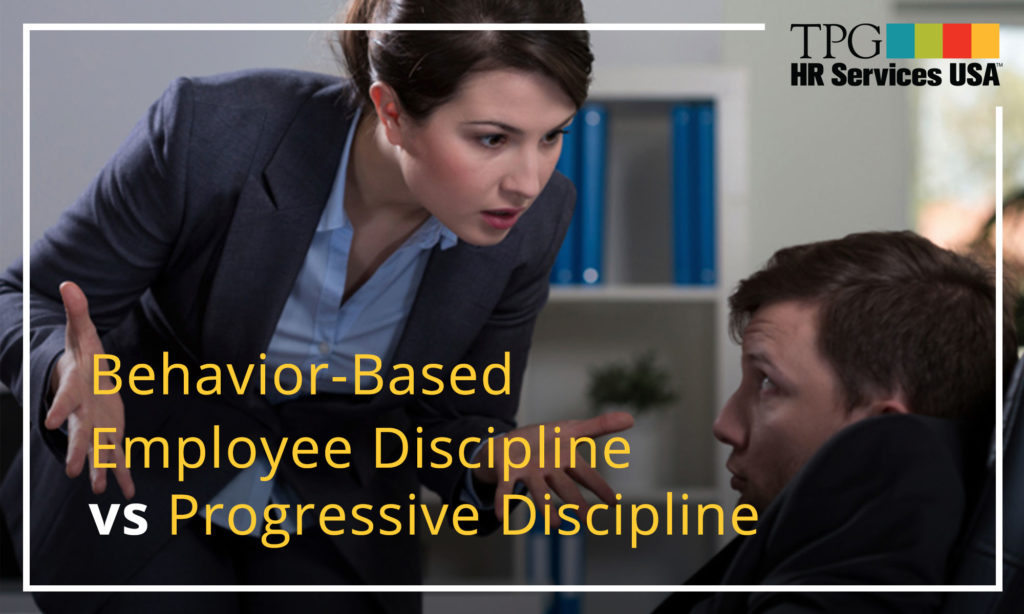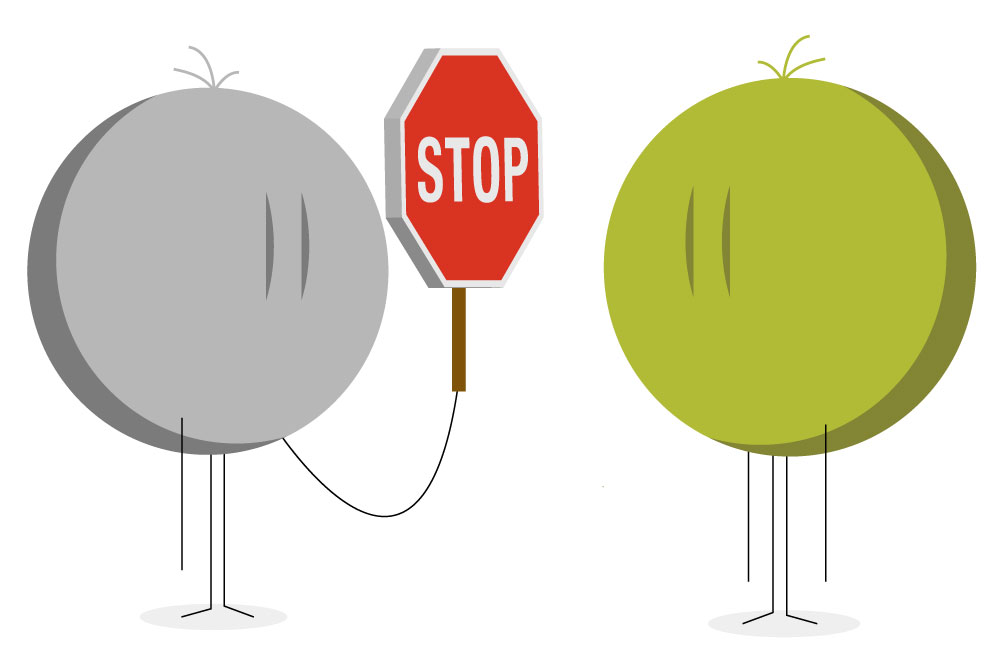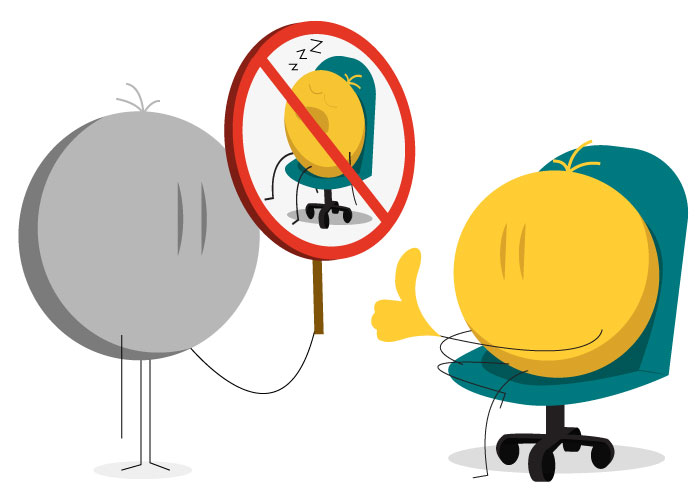
Behavior-Based Employee Discipline vs Progressive Discipline

Ms. Pomerantz is the CEO of TPG HR Services USA and has over 35 years of Human Resources practices experience. She holds a Master’s in Human Resource Management (MHRM) and is a certified Senior Professional in Human Resources (SPHR) and SHRM Senior Certified Professional (SHRM-SCP). Mary also serves as CEO of Mary Pomerantz Advertising, one of the largest recruitment advertising agencies in the country. Earlier in her career, she was president of the 17th largest staffing firm in the country.

It’s the necessary evil that nearly every boss, manager, supervisor, and HR professional dreads: having to discipline an employee for tardiness, lack of productivity, or anything else. Choosing to employ behavior-based employee discipline and employee coaching can sometimes help a troubled employee succeed.
In an ideal world, no employee would ever do anything wrong or underperform; unfortunately, these things happen at all workplaces, making employee discipline an inevitability. Leading hr consultants today recommend the use of behavior-based employee discipline over traditional progressive discipline.
A common scenario often encountered by hr consultants is an employer who waits too long to address an employee problem, or they do talk to the employee but are completely ineffective in their handling of the situation. Sometimes when they do hand down discipline they focus too much on punitive measures and the outcome is actually counterproductive.
Make Sure You’re Handling Employee Discipline Correctly
Before delving into what you should be doing to discipline your employees, it’s important to first understand some of the common mistakes made and things you should not do.

- Progressive Discipline: This is by far the most common employee discipline procedure, dating back over 70 years and having coincided with the rise of unions. It’s basically a four-step process: oral warning, written warning, suspension, and then termination. The problem with this approach is that it is very adversarial and does not include any corrective action. This constantly puts the manager or supervisor in a position to be the “bad guy,” and pits management against employees. It’s not that this approach can’t be effective; it’s more that it has become a step-by-step procedure for firing an employee rather than attempting to coach and correct the issue.
- Nothing in Writing: There may be an assumption that certain rules are self-evident, like showing up on time, but that doesn’t mean you shouldn’t have a company policy in writing for all of your employees to see and agree to. Using this method makes it so there are no surprises and no excuses when discipline is handed down. An employee manual or handbook helps in this endeavor.
- Lacking Consistency: If a rule violation by one employee led them to be written up, suspended, or terminated, you better be sure that you didn’t look the other way on the same infraction by another employee earlier. Playing favorites (even if it is based on superior work performance) is not a good employee disciplinary practice.
- Jumping to Conclusions Without All the Facts: This is frequently born from bosses not wanting to spend the time to investigate and find out all of the facts associated with a situation. Before making any employee discipline decisions, it’s important to do your due diligence and make sure you know everything there is to know.
- Discipline as Punishment: When managers see employee discipline as a form of punishment instead of an opportunity to educate and correct, they are taking a flawed approach. While this can have some limited effectiveness, it doesn’t actually take steps to address the root of the problem, making a recurrence more likely.
Behavior-Based Coaching: A Different Kind of Disciplinary Approach
Unfortunately, the word discipline has become synonymous with punishment in the working world. However, the word discipline can also be applied to a sports team that does the right things and makes the right decisions for the good of the squad. If employers look at employee discipline as a way to maximize productivity and keep everyone on the same page and pulling in the right direction – it can drastically change their tactics and results. We recommend trying a more positive approach to employee discipline by using behavior-based coaching.

- Have an Informal Discussion First: Without having anything written down or documented, talk to your underachieving employee about what they’re doing right and what they’re doing wrong. Help them understand what is needed from them and the gap that exists between their actual work performance and their expected performance. Using this non-adversarial technique lets your employee know that there is a problem and that they have the opportunity and the tools to correct it. One thing that cannot be overlooked is the need for coaching. It’s not enough to say, “Your work is unsatisfactory. Fix it.” Give examples, give advice, and tell them what exactly has to be done for them to meet their expectations.
- Give a Reminder: Instead of a warning or reprimand, a reminder is a friendly and non-confrontational way to let your employee know he or she must live up to certain performance expectations to earn their pay.
- Give a Second Reminder: If you find that your employee is still failing to meet their expectations, a second reminder becomes necessary. Make sure to reiterate all of the things that are expected of them, document this reminder, and place it in the employee’s file.
- Decision-Making Leave: When it’s clear that your coaching and reminders have not been effective, the next and final step is putting the employee on a one or two-day decision-making leave. This is a timeout of sorts, where the employee is given time to reflect on their actions, performance, behavior, and work expectations. When the employee returns, they either hand in their resignation because they’ve determined they don’t want to adhere to company policies, or they return giving a signed written agreement to make the necessary changes.
Take The Onus Off Management
Behavior-based coaching uses a non-punitive approach that shifts the responsibility for performance deficiencies from management onto the employees. It says, “We’ve done everything in our power to help you be successful within our company. The rest is up to you.”
This strategy helps in reducing unemployment taxes and liability. Many firings can be challenged and wrongful terminations are on the rise. Additionally, when an employee is terminated and claims they did not realize they were violating the rules, they may be granted unemployment benefits. Decision-making leave puts the process in their hands – either they do what they’re expected to or leave voluntarily. It also potentially saves on the recruiting/hiring/onboarding/training costs, as you won’t be forced to terminate employees.

Also, they can never claim they didn’t know what was expected of them or that they weren’t given a chance to correct themselves. This also makes your disciplinary practices seem fairer to your other employees, who might’ve sided with another worker had you used a different and more adversarial approach. This approach can also be applied to dealing with a good employee with a bad attitude.
TPG HR Services USA is well-versed in employee relations. We routinely recommend and/or administer behavior-based coaching for employees at our client companies. Our team of HR professionals has over 30 years of experience in the industry. If you’re one of the millions of business owners who are being pulled in dozens of directions, we can help. Contact us today to learn more about our HR services.
Contact us today at 732-917-6000 to learn more about our many HR services and how we can help your business run better.
